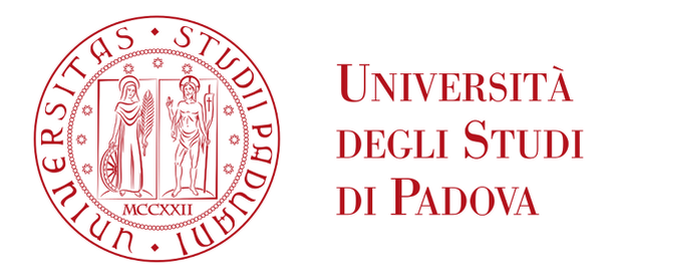Future Courses (2018/2019)
These are some of the Courses of the Program which will be offered in the next academic year:
- B. Chiarellotto and A. Iovita (Padova), The fundamental group.
- D. Vittone (Padova), Introduction to the theory of Optimal Transportation.
- F. Fassò (Padova), Lie Groups and Symmetry.
- M. Di Summa (Padova), Convex optimization and convexification techniques.
The complete list of courses for 2018/2019 will be published by the beginning of the academic year.
1. The fundamental group
We will try to show how the basic construction of the topological fundamental group can be generalized in other frameworks and in higher homotopy invariants. Among the aim of the class it will be to show how the Classical Galois Group of a field k can be linked to the generalization of the fundamental group calculated on the arithmetic/algebraic space linked to the space (scheme) associated to the field k. Moreover an algebraic variety (i.e. zeroes of a polynomial in several variables) over C can be seen as a topological space with its own topological fundamental group. What about the “algebraic fundamental group", which involves only "geometric coverings" (i.e. given by polynomials)? During the class we will try to explain some trends of recents researches.
- Classical definitions of the first homotopy group and higher homothopy theory. Singular Homology.
- Reprentations of the fundamental group: local systems. Fibration and fundamental group. Homology relations.
- The algebraic case. Algebraic varieties and schemes. Schemes.
- The covering spaces of a scheme. Étale topology. Interpretation of the fundamental group. Link with the classical definition.
+the student is supposed to know: basic topology and basic geometry.
During the class we will follow some texts (Görtz "Algebraic Geometry I: schemes and exercises". Rotman "Introduction to algebraic topology" ) and some notes from the teachers.
2. Introduction to the theory of Optimal Transportation
The course aims at introducing the fundamental ideas and results in the theory of Optimal Transportation as well as some applications in different areas of Mathematics.
Prerequisites: Basic notions of measure theory
Programme: Part 1: general theory
- Monge and Kantorovich formulation
- Duality theorems
- Existence of optimal transport plans
- Existence of optimal transport maps: Brenier theorem in the case p=2
Part 2: applications, to be chosen among
- Geometric inequalities
- Ramified optimal transport
- Monge-Ampere equation
- Introduction to Wasserstein spaces
- A metric approach to Ricci curvature.
References:
- C. Villani, Topics in Optimal Transportation, Springer
- L. Ambrosio, Lecture notes on optimal transport problems, available at http://cvgmt.sns.it/paper/1008/
- F. Santambrogio, Optimal Transport for Applied Mathematicians, Birkhauser
3. Lie Groups and Symmetry
The course aims at providing an introduction to the theory of Lie groups and their actions, which is a topic of broad interest but almost completely absent from the courses of our Laurea Magistrale. After covering the fundamentals of the subject, the course will provide some examples of use of Lie groups in the study of ODE with symmetry.
Synopsis: Lie groups and their differential---and group---structure (left and right trivializations, Lie algebra of a Lie group, exponential map, maximal tori, (co)adjoint action, structure of compact Lie groups). The classical matrix groups and their properties. Differentiable actions of Lie groups on manifolds, quotient spaces (for proper actions), invariant vector fields. Reduction of invariant vector fields. Applications to ODEs with symmetry (reduction and reconstruction; integrability).
Prerequisites: (very) basic knowledge in differential geometry.
The course is addressed to all students.
Examination structure: oral examination on the topics covered during the course.
Reference material:
- A. Baker, Matrix groups. An introduction to Lie group theory. (Springer, 2002)
- J. Lee, Introduction to Smooth manifolds. 2nd edition. (Springer, 2013)
- T. Bröcker and T. tom Dieck, Representations of compact Lie groups. (Springer 1985)
- R. Cushman, J.J. Duistermaat and J. Śnyaticki, Geometry of Nonholonomically Constrained Systems. (World Scientific, 2010).
4. Convex optimization and convexification techniques
We will try to achieve two partly contrasting targets: on the one hand, students who have never attended any course in Operations Research will learn some fundamental notions in this area, in particular in the field of convex optimization and its application to discrete optimization problems; on the other hand, students with some knowledge in Operations Research will see a variety of results in convex optimization that are usually not covered in master programs, as well as alternative algorithms for some fundamental optimization problems and the interplay between continuous and discrete optimization.
- Representation of convex sets, support functions, gauge functions, separation theorems.
- Combinatorial aspects of convexity: Helly- and Radon-type theorems, colorful Caratheodory theorem.
- Convex optimization: gradient-based methods, interior-point methods.
- The special case of linear programming and polyhedra. Algorithms not based on the simplex method.
- Discrete optimization problems: polyhedral approach, convexification techniques, iterative methods that construct hierarchies of relaxations.

